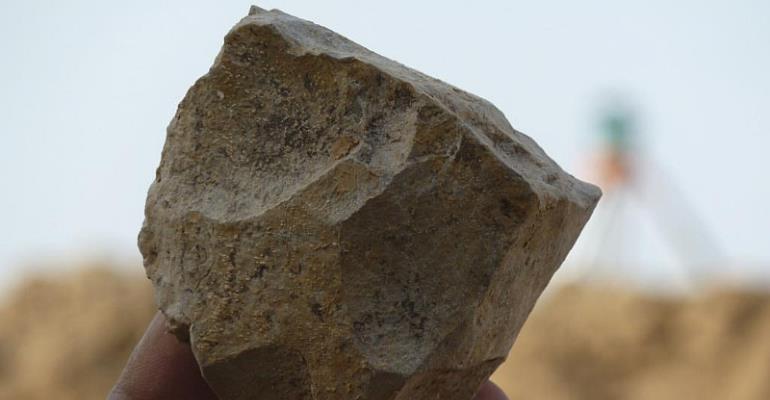
The discovery of tools and cut bones in Algeria shows that human ancestors were in north Africa hundreds of thousands of years earlier than previously thought, putting into question east Africa's position as the so-called “cradle” of civilization. A team of international researchers from institutions in Algeria, Spain, France and Algeria found and dated artefacts at Ain Lahnech, in Setif, eastern Algeria, and published the results in Science on Thursday.
The first Homo species, the direct ancestors to today's Homo sapiens, emerged about two million years ago , around the time that these artefacts are dated.
Mohamed Sahnouni, a professor at the National Centre for Research on Human Evolution in Burgos, Spain, and the lead author of the research paper says that the research upends commonly taught history that says that human origins are in the East African Rift, between Tanzania and Ethiopia.
Below is an interview with RFI, edited for clarity.
Q: What exactly did you and your colleagues find?
We discovered two archaeological deposits. One is very old, dated to 2.4 million years ago. We excavated stone tools, called Oldowan, in reference to the Olduvai gorge archaeological site in Tanzania.
Oldowan is a technological tradition of very basic stone tools, made from stone cores, off of which flakes were knocked off. We also found flakes with sharp edges, which were used in acquiring animal subsistence.
And we found that they used the stone tools in acquiring animal subsistence, because there were fossil bones of a Savannah kind of ecology, including elephant, rhino, bovids, et cetera.
Some of those specimens bear cut marks, or means butchery marks, which tells us a lot about how these early humans got their subsistence.
The other archaeological site is a bit younger, dated 1.9 million years ago, and we found exactly the same things.
Q: What do these findings mean for our understanding of this history?
This discovery means two possible hypotheses: One is that there was a rapid expansion of early humans from east Africa to the north.
Why rapid? Because of the chronology. The site in north Africa is 2.4 million years old, while the oldest finds in eastern Africa are 2.6 million years old. They are nearly contemporary.
Q: 200,000 years seems like a long time!
For us today, yes, but for early humans to expand, that's not much time. We are talking demographically about restricted groups of humans, 10-15 maximum. And the expansion is in the course of looking for food resources, with all the threats. So it is not quick.
The other hypothesis is that there is more than one location for the origin of humankind.
Q: Do we know who they were? This timing is right on the edge of the emergence of the Homo genus.
Right now, whether in north Africa or in east Africa, none of the sites have yielded any associated early Homo remains. So what we can say for now is that the toolmakers were early Homo, but we can't say which species.
Q: What is next for you: looking for more finds to bolster this theory?
That's what we are looking for. We have other deposits with potential, with a lot of well-preserved fauna. We will have to look.


















Facebook
Twitter
Pinterest
Instagram
Google+
YouTube
LinkedIn
RSS